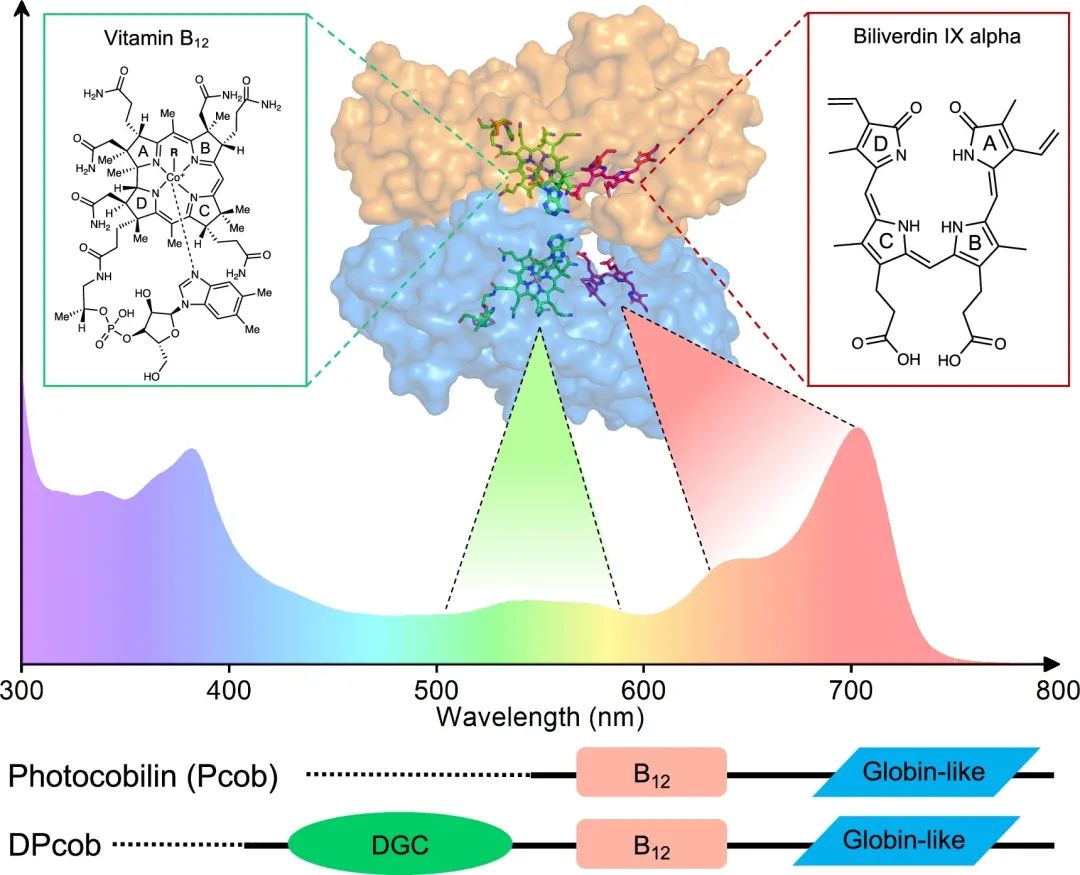Recently, A research team from the College of Science at National University of Defense Technology identified novel photoreceptors proteins capable of responding to a wide range of visible light wavelengths, marking it as one of the first identified multi-center photoreceptors in nature. The findings titled "Photocobilins integrate B12 and bilin photochemistry for enzyme control" have been published in the journal Nature Communications (DOI: 10.1038/s41467-024-46995-1).

Figure 1. The chromophores and wavelength sensitivity of the new multi-center photocobilin photoreceptors.
Biologists have made substantial progress in their pursuit of novel photosensitive proteins capable of harnessing light energy. This research has revealed and characterized a novel sub-family of multi-center photoreceptors that utilize two distinct chromophores to expand the wavelength range, enabling more efficient light detection and response. Additionally, the findings elucidates valuable knowledge on the the crystal structure and functional regulatory mechanisms governing this protein family.
This research not only deepens our understanding of natural light-sensing mechanisms but also provides crucial insights for designing cutting-edge optogenetic tools and photo-biocatalytic components in synthetic biology.
Associate Professor Zhang Shaowei from the College of Science is the lead author of the paper, with Lecturer Liu Chuanyang and Professor Zhu Lingyun as co-authors. The work was supported by the National Natural Science Foundation and NUDT Research Program.
In recent years, this team has been focusing on developing innovative synthetic biology approaches, leveraging high-throughput mining techniques to identify biofunctional parts and designing novel gene circuits that can be applied to tackle pressing challenges in biosecurity threats detection, biosynthesis of high-energy compound, and AI-driven design of biofunctional parts. A series of research was published in high-impact journals including Cell , Nature Immunology , Cell Research , Nature Communications , and the Journal of Experimental Medicine.
Written by: Liu Chuanyang, Zhang Shaowei





